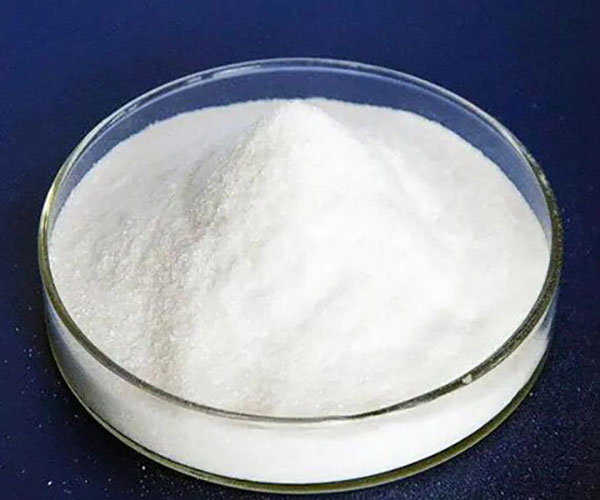Lithium hexafluorophosphate (LiPF6)


Lithium hexafluorophosphate (LiPF6) Battery Grade
Lithium hexafluorophosphate, with the chemical formula of LiPF6, is a white powder. Due to its excellent electrochemical properties, lithium hexafluorophosphate is widely used as an electrolyte material in lithium-ion batteries and is an indispensable core raw material for lithium-ion batteries. It mainly plays the role of conducting lithium ions in lithium batteries and is one of the indispensable formulas for power batteries. In addition, lithium hexafluorophosphate is also used in the field of electrolytes, which can improve the conductivity and stability of electrolytes, thereby improving the performance and service life of the entire equipment.
- CAS NO.:21324-40-3
- HS Code:2826909001
- EINECS No.:244-334-7
- Molecular Weight:151.905
- Appearance:white crystal or powder
Technical Specifications
| Item | Lithium Hexafluorophosphate |
| Density | 1.50 g/cm3 |
| Insoluble substance | ≤0.1% |
| Moisture | ≤20 ppm |
| Dissociation acid (HF) | ≤100ppm |
| Al | ≤5 ppm |
| Cu | ≤5 ppm |
| Cr | ≤5 ppm |
| Ca | ≤2 ppm |
| Fe | ≤5 ppm |
| Pb | ≤2 ppm |
| Mg | ≤5 ppm |
| Na | ≤5 ppm |
| Melting point | 200 °C |
| Molecular weight | 151.91 g/mol |
Applications of LiPF6 Powder in Lithium-ion Batteries
New energy vehicles. Lithium hexafluorophosphate LiPF6 is mainly used in the field of power batteries for new energy vehicles, providing high energy density and long-life battery performance.
Energy storage system. In the field of energy storage batteries, lithium hexafluorophosphate chemical helps improve the energy storage efficiency and life of batteries.
Smart electronic devices. 3C electronic products such as mobile phones and tablets also widely use LiPF6 electrolyte to ensure stable operation and long life of the equipment.
Production Method of Lithium Hexafluorophosphate LiPF6
Hydrofluoric acid solvent method. Dissolve lithium halide in anhydrous hydrogen fluoride, and then introduce high-purity PF5 gas to react to generate lithium hexafluorophosphate crystals. This method is one of the main methods for large-scale industrial production.
Organic solvent method. Suspend LiF solid in an organic solvent, and then introduce purified PF5 gas. This method avoids the use of hydrogen fluoride, does not pollute the product during the production process, and is relatively safe to operate, but it is difficult to obtain a high-purity product.
Ion exchange method. Hexafluorophosphate and lithium-containing compounds undergo ion exchange reactions in an organic solvent to obtain lithium hexafluorophosphate. This method has high requirements for solvents and high raw material costs.
Why Is Lithium Hexafluorophosphate LiPF6 Used as Electrolyte?
-
Compared with other chemicals, lithium hexafluorophosphate has higher ion conductivity. In lithium-ion batteries, the conductivity of ions is a key factor affecting battery performance. And lithium hexafluorophosphate powder has higher ion conductivity, which means that the battery can charge and discharge faster, improving the working efficiency and service life of the battery.
-
Lithium hexafluorophosphate powder has high electrochemical stability. Electrochemical stability is an important guarantee for battery safety. LiPF6 material has high electrochemical stability, which can effectively reduce the risk of dangerous situations such as short circuit, overcharge or over-discharge of batteries, such as preventing explosions caused by overcharging of batteries.
-
LiPF6 powder has high solubility. Lithium hexafluorophosphate solution has a high solubility, which can make salts more fully dissolved in the electrolyte, thereby ensuring the stability and performance of the battery.
Characteristics of Lithium Hexafluorophosphate
High-purity LiPF6 chemical is a white crystal or powder with a relative molecular mass of 151.91, a relative density of 1.50, and a melting point of 200℃. From its crystal structure, it can be seen that every 6 F atoms form a hexacoordinated octahedron around 1 P atom, and the octahedron and lithium ions are in different layers. LiPF6 is highly deliquescent and reacts with trace amounts of water in the air to produce HF, etc. It is easily soluble in water, ether, low-concentration methanol, carbonates and other organic solvents.
The thermal stability of LiPF6 is worse than that of other lithium salts. It can be decomposed into LiF and PF5 in small amounts at 60℃, and begins to decompose in large quantities when heated to about 180℃. It begins to decompose at 160℃ in dry N2. The thermal decomposition temperature of LiPF6 in the electrolyte is higher than that of solid LiPF6.
The lithium salts currently used as electrolytes for lithium-ion batteries are mainly divided into inorganic lithium salts and organic lithium salts. Inorganic lithium salts are the most widely used electrolytes. LiPF6 has the best overall comprehensive performance, with the advantages of being environmentally friendly, passivating the positive electrode current collector to prevent electrode corrosion, facilitating the formation of SEI film on the negative electrode, and having a wide electrochemical stability window. Therefore, LiPF6 powder is the most valuable electrolyte lithium salt at this stage and in the foreseeable future.
Contact Us
Have any need about new-energy materials? Feel free to contact us at any time.
- Phone: +86-371-55091002
- Whatsapp: +8618624832876
- Wechat: +8618624832876
- Email: Sales@mgm-batterymaterials.com
- Address: NO.283 XISANHUAN ROAD,HIGH-TECH INDUSTRIALDEVELOPMENT ZONE,ZHENGZHOU,HENAN,CHINA.
